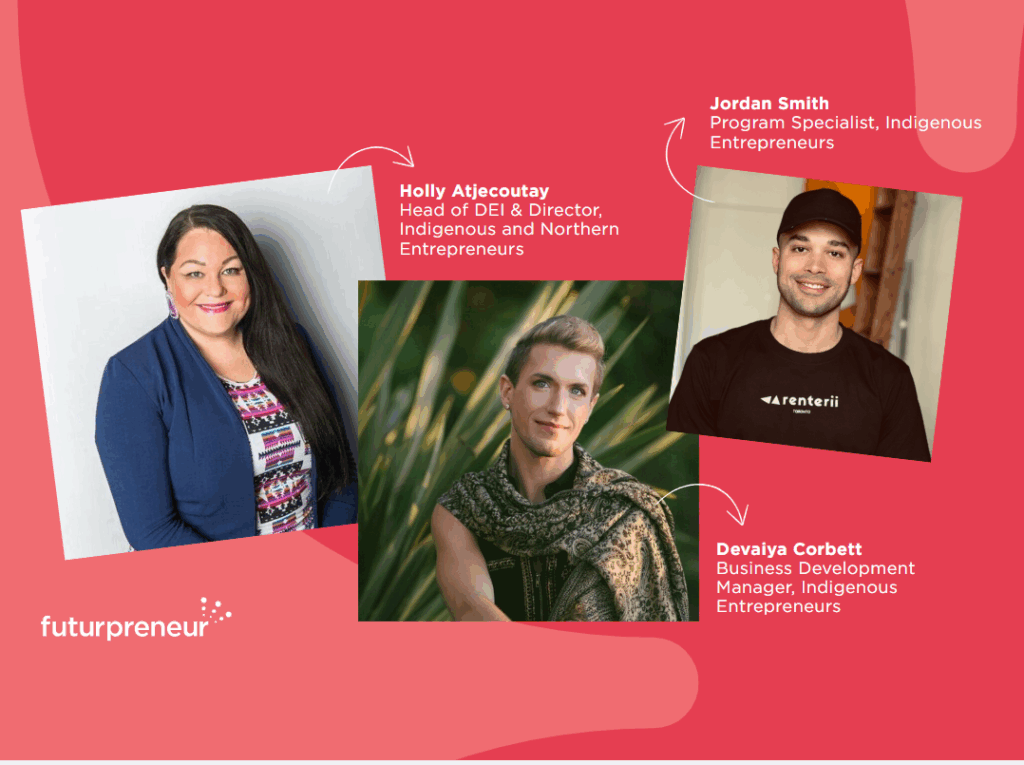
- Entrepreneurship
How to Land Your Product onto Retail Shelves
You’ve developed your product, and now you’re ready to expand your sales beyond your online store, but where do you go from here? Landing your products on store shelves can be an exciting milestone for new business owners, however, it’s not something that’s going to happen overnight. Just because you think your product is ready or the perfect fit, doesn’t mean store managers will. So how do you ensure that you have success when pitching to retail stores (big or small)? We spoke to a couple of our Aja Horsley and Tiffany Astle, two Futurpreneur-supported entrepreneurs about how they brought their product from just an idea to being sold in stores across the country.
Aja is the Chief Executive Officer of Drizzle Honey Products, a company created in 2015 from Aja’s love of honey bees, local agriculture and natural, healthy products. Shortly after, Drizzle was born. She began selling her products in local artisan markets, and only four months ago she received Canadian Food Inspection Agency (CFIA) approvals and was able to start selling in retail stores.
Tiffany is the Chief Cheerleader of Penny Candy Jam, a company created to bring low sugar, all natural and delicious jams to the market. Penny Candy Jam was launched in fall of 2015 and in the same month, and only the second market they were selling at, they landed their product into their first independently-run store.
Here is what Aja and Tiffany had to say about their journey from idea to store shelves, including some helpful tips on where to start.
What was your biggest learning curve when trying to get retail stores to carry your product?
Aja: I didn’t realize how many requests to carry products that retailers received. Each store only has a small amount of space, a certain aesthetic or brand that they are trying to keep and a margin they have to work with. Slowly my email and in-person pitches got stronger, I learned to tailor my pitch towards what information they needed to know in order to make a decision, and I developed stronger marketing material such as a sell sheet with professional photography
Tiffany: We continue to learn every single day when it comes to retail. Initially the challenges were learning the ropes when it came to producing jam for consumption outside of the market arena. We rented a commercial kitchen, investigated insurance requirements and worked with our graphic designer to recreate our labelling. Today we continue to learn about requirements for major grocery retailers and are approaching the process with open arms!
Where do you start when wanting to get your product into stores?
Aja: Develop your social media so potential retailers can get an understanding of your audience engagement, your story and how you/your customers use your products.
Tiffany: We are so thankful to our vendor family who helped walk us through the starting process of getting into retail. To be honest, we found our first retail partner while vending at a market, and would strongly suggest that all other producers start there. The connections you make at markets will push you forward in all aspects of business growth (and they are great support, too!).
What are some things that are often overlooked when trying to pitch your product to retailers?
Aja: I think it is so important to give potential retailers numbers they can work with when you approach them. For example, right away they will want to know what margin they get, the suggested retail price, the cost for shipping, how many stores you are in, how many stores in their city/district you are in, etc. Make sure you have these ready and are confident that your product will make them money, because in the end, that is the most important piece of the pie.
Tiffany: We started to sell in retail before we were ready which definitely kept us on our toes. We’d strongly suggest working with a trusted lawyer the minute you start thinking about selling in-store. We also didn’t know where to begin when it came to UPC codes and nutritional labeling, which we leaned on our vendor family for information on how to get these done properly. Things like labeling and insurance and finding a commercial kitchen take longer than you predict, so starting here before heading into retail meetings is key.
What would you suggest entrepreneurs do before they start pitching to retailers?
Aja: Develop your social media, have a website ready, have your wholesale sell sheet complete and have your food and safety approvals in line (more specific to a food product). All these things make you look prepared and give your retailer something to reference when they go to look up more information about you.
Tiffany: Know your story. We worked diligently to be able to describe Penny Candy Jam and the things about it that would make it appealing to stores very succinctly. It has gotten us our foot in the door at a lot of places that we never thought we’d sell jam at so early in the game.
What are your biggest tips to be successful in pitching your product to retailers?
Aja: Bring a visual sample like photography, something they can eat, they can keep etc. This gives you more time with them, something to speak to and helps them remember your product after you have left. Oh, and always follow up as soon as possible while your visit, phone call or email is fresh on their mind.
Tiffany: Be genuine and honest. Love your product. We meet people all the time who say they aren’t jam fans, or that jam wouldn’t do well in their stores. More often than not, they can’t even hear the messages about our actual product but what they do hear and see and feel is how passionate we are about our jams. Once they understand that, their minds are more open to hearing the important selling points like being low-sugar, fruit forward and the best jam they will ever taste.
Do you have tips for entrepreneurs that you think should be spread far and wide? Tweet us @Futurpreneur or email us at content@futurpreneur.ca.
Written By: Lauren Marinigh, Social Media & Content Specialist, Futurpreneur Canada





